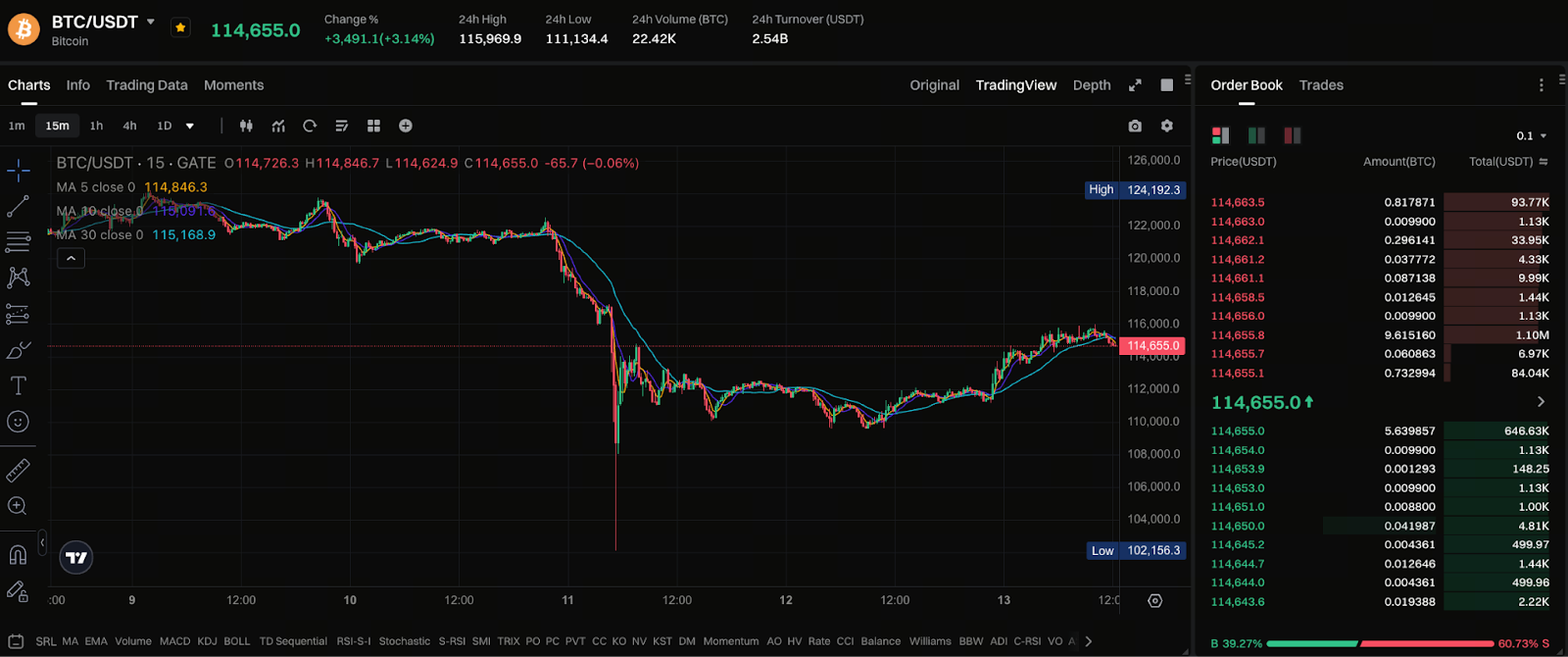Beginner’s Guide: What is Yei Finance (CLO)? Understanding the Cross-Chain Liquidation Layer Clovis
What Is a Crypto Market Pullback?
A “pullback” or “dip” describes a brief price correction following strong upward momentum in an asset and does not signal a trend reversal. Think of it as a temporary pause in the market. In crypto, pullbacks are typically triggered by profit-taking, a cascade of liquidations, or macroeconomic news events. For newcomers, it’s essential to differentiate a pullback from a bear market—a pullback is a short-term adjustment during an uptrend, whereas a bear market indicates a fundamental change in market structure.
Recent Market Trends and Pullback Indicators

Chart: https://www.gate.com/trade/BTC_USDT
Recently, the crypto market has shown clear signs of a pullback. Since early October, total crypto asset market capitalization has dropped by over $500 billion. Bitcoin briefly dipped below $10,500, with Ethereum following suit. The pullback has largely been driven by three factors:
- U.S. tariff hikes and export controls, sparking global risk-off sentiment.
- Widespread liquidation of leveraged positions, fueling further selling pressure.
- Concentrated profit-taking, as investors sell to lock in gains and drive short-term price declines.
The drop has been significant; however, many analysts view this as a “healthy pullback”—a consolidation phase in a bull market, rather than a market collapse.
How to Distinguish a Healthy Pullback from a Crash
A healthy pullback is typically marked by prices stabilizing near key support levels, an uptick in trading volume that remains within reasonable bounds, and subsequent signs of a stable rebound. A crash, in contrast, brings extreme liquidations, breaches of support, and extended weakness. If prices recover quickly and move back above key moving averages after a pullback, it can be seen as a short-term adjustment. Repeatedly failed rebound attempts and deteriorating market sentiment may indicate a potential trend reversal.
Tips for Beginners
Panic selling or blindly buying the dip are common mistakes for new investors during a pullback. The right strategies include:
- Setting stop-loss thresholds: Define your maximum acceptable loss before each trade.
- Laddered orders: Avoid going all-in or all-out at once to stay flexible.
- Leverage control: Reduce leverage during high volatility periods, focusing on capital preservation.
- Maintain composure: Short-term swings don’t mean the long-term trend has ended—don’t let emotions drive your decisions.
- Stay informed: Policy shifts, macroeconomic news, and technical signals often foreshadow market moves.
Opportunities Hidden in Pullbacks
Although pullbacks can spark fear, they also create attractive setups. When panic spreads throughout the market, high-quality assets are often undervalued. Key support zones for leading cryptocurrencies like Bitcoin or Ethereum may provide favorable entry points for incremental investments; some strong altcoins may also see substantial rebounds after corrections. In addition, short-term outflows tend to flush out speculative leverage. This paves the way for a healthier environment for long-term investors.
Summary and Recommendations
You don’t need to fear pullbacks in the crypto market—they naturally occur during upward trends. New investors should stay rational, allocate funds and positions wisely, and avoid chasing rallies or panic selling. If you can remain calm and make sound decisions during times of fear, you may find your next opportunity in these corrections. Remember: short-term volatility brings risk, but real opportunity often lies beneath it.
Related Articles

2025 BTC Price Prediction: BTC Trend Forecast Based on Technical and Macroeconomic Data

Pi Coin Transaction Guide: How to Transfer to Gate.com

Flare Crypto Explained: What Is Flare Network and Why It Matters in 2025

How to Use a Crypto Whale Tracker: Top Tool Recommendation for 2025 to Follow Whale Moves

What is N2: An AI-Driven Layer 2 Solution
